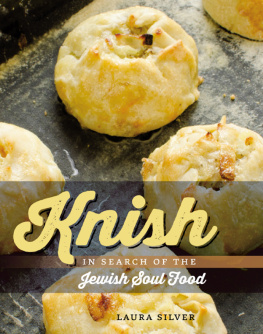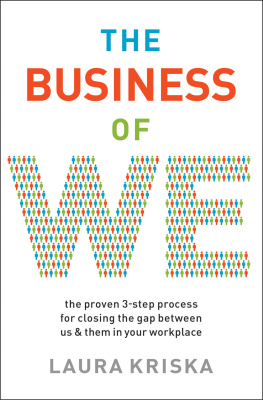Laura - Entertain Decorate Celebrate: July/August 2014
Here you can read online Laura - Entertain Decorate Celebrate: July/August 2014 full text of the book (entire story) in english for free. Download pdf and epub, get meaning, cover and reviews about this ebook. publisher: Brandeis University Press, genre: Home and family. Description of the work, (preface) as well as reviews are available. Best literature library LitArk.com created for fans of good reading and offers a wide selection of genres:
Romance novel
Science fiction
Adventure
Detective
Science
History
Home and family
Prose
Art
Politics
Computer
Non-fiction
Religion
Business
Children
Humor
Choose a favorite category and find really read worthwhile books. Enjoy immersion in the world of imagination, feel the emotions of the characters or learn something new for yourself, make an fascinating discovery.
- Book:Entertain Decorate Celebrate: July/August 2014
- Author:
- Publisher:Brandeis University Press
- Genre:
- Rating:3 / 5
- Favourites:Add to favourites
- Your mark:
- 60
- 1
- 2
- 3
- 4
- 5
Entertain Decorate Celebrate: July/August 2014: summary, description and annotation
We offer to read an annotation, description, summary or preface (depends on what the author of the book "Entertain Decorate Celebrate: July/August 2014" wrote himself). If you haven't found the necessary information about the book — write in the comments, we will try to find it.
Laura: author's other books
Who wrote Entertain Decorate Celebrate: July/August 2014? Find out the surname, the name of the author of the book and a list of all author's works by series.
Entertain Decorate Celebrate: July/August 2014 — read online for free the complete book (whole text) full work
Below is the text of the book, divided by pages. System saving the place of the last page read, allows you to conveniently read the book "Entertain Decorate Celebrate: July/August 2014" online for free, without having to search again every time where you left off. Put a bookmark, and you can go to the page where you finished reading at any time.
Font size:
Interval:
Bookmark:
Acknowledgments
Like a batch of knishes, a book benefits from many hands. Throughout this process, I have been bolstered and humbled by the support of family and friends, colleagues and strangers. I have received servings of kindness and generosity that I hope to repay, and not just in knishes.
My first dispatch on the humble pie appeared in the anthology Jews of Brooklyn (2002). After the demise of Mrs. Stahls, theneditor in chief of Brooklyn Papers Gersh Kuntzman pushed me to issue a clarion call for the pastry and dubbed me the Knish Lady. Sharon Ashley published my ode to the disappearing pastry pie in the Jerusalem Report. I thought I was done with it.
Susan Shapiro encouraged me to write a book. Ryan Fischer-Harbage helped me develop a proposal. The Womens National Book Association gave me a chance to pitch. Pamela Druckerman and Lauren Weber provided fullbodied, generous feedback. Harriet Bell took me under her wing and reminded me that a knish, at its core, is a pillow. Diane Jacobs, Lea Beresford, and Joe Veltre contributed editing and ideas. Temim Fruchter imposed order on a half decade of research. Hallie Newman refined the morass of early drafts and images, with heart.
Jill Slater kept listening and kept telling me to keep going. Nina Frenkel kept me company and reminded me, many times, why it mattered. David Sauvage diagramed the story. Alisa Algava stayed up late so I could submit something. Gabrielle Maisels edited on screen. Lindsay Packer listened, many times. Jesse Tisch offered expert editing advice. Kelly Waggoner applied an eagle eye to early drafts. Jeff Hoover read and reread the manuscript and provided astute suggestions on structure, wording, and style. The book is better for his input, and I am better for his guidance and friendship.
Kathleen Doyle kept me on track. Ian Hodder contributed crosswords, ultimatums, and top-of-the-line proofreading skills. Joan Larkin sent a poem, an article, and reassurance. Deb Goldstein insisted on a Kickstarter campaign. Peter Hamlin donated a beautiful video. Bertha Lowitt wanted to know where the book was. Daniel Cainer cracked me up. Gloria Aroffo offered gifts of every ilk. Ilana Abramovitch did everything, including reconnaissance on the Pizza/Knish aisle. Liz Kazmier demanded a definition of the word plotz. Sara Michael drove me to Zingermans. Boris Fishman offered support and Ukrainian contacts. Doug Rosenberg told me to finish it, already. David Rakoff invited me for lunch on the steps of the library. The Jewish Meditation Center offered calm.
The story of the potato pie doesnt belong to any one person, but descendants of distinguished knish lineages bear a special claim. I am grateful for Andrew Axlers post, which led me to the family of Fannie Stahl, who welcomed me with open arms, and a pinch of disbelief. Toby Engelberg immediately suggested I come to San Francisco to make knishes. Sara Spatz had me to her home, several times. Jonas and Lois Spatz laid out their recollections. Three generations of the Colby familyMadeleine, Helen, Danielleshared memories and mementos. Cori Kesler put me in contact with the Weingasts, who were generous with their memories and mementos. Marvin Hirsch entertained endless requests for information. Larry Hirsch shared notes on his knish-making technique. Pamela Hirsch let me borrow a prized image of her grandfather. Mort Shatzkin doled out recollections. Jerry Oshinsky, may his memory be for a blessing, dished out pure joie de knish and love of Jewish ritual. Bonnie Abrams delivered a live performance of Rubys Knishes at the New York Public Library. Noah Wildman, at every opportunity, plied me and those around me with you know what. To everyone who shared time, reminiscences, recipes for knishes and good living, I extend a special, heartfelt thanks. You are the true heroes of the ever-evolving history of the knish.
A small army of intercontinental translators made it possible for me to insert myself, literally and vicariously, into other places and time periods. Ilil Paz-el translated from Hebrew; Chana Pollack and Myra Mniewski from Yiddish; Mateusz Zurawik and Gosha Zaremba from Polish; Paula Teitelbaum, beloved Yiddish teacher, from mamaloshen, Polish, and Russian. Ostap Kin translated from Ukrainian. Lubow Wolynetz explained everything I could possibly want to know, but had no idea how to ask, about the Ukrainian knysh. Barbara Henry, Jay Dubb, and Julia Verkholantsev translated handfuls of documents from the archives in Bialystok. At the New School, super-librarian Brita Servaes sleuthed out German-language etymological connections to the knish. Maxim Piz provided context and camaraderie.
In Poland, Agnieszka Krglicka came to meet me early on a Saturday morning, scoured Warsaw for knish connections and, again and again, extended the warmest possible welcome. Katarina Piechocki and her family offered extraordinary hospitality. Karol Kempnerski ran across the city in record time to look for a fabled street fair knish, then helped me make sense of goings on in Bialystok and Knyszyn. Barbara Kirshenblatt-Gimblett, director of the core exhibition at the Museum of the History of Polish Jews, provided detailed, thoughtful, and very generous answers, every time. Anna Kraus unearthed essential ancient sources at the University of Warsaw Library. Marcin Bartosiewicz of the Foundation for the Preservation of Jewish Heritage in Poland became a relentless ally, valued colleague, and repeated source of good humor. Tomek Winiewski not only translated but also shepherdedand chauffeuredgenealogical wanderings. In Knyszyn, Krysztof Bagiski gave me an official welcome. Henryk Stasiewicz, may he rest in peace, pedaled over on a moments notice and made sure I saw the Jewish names on the centuries-old plaque that listed members of the city council. Friends of the Forum for Dialogue Among Nations invited me on a once-in-a-lifetime trip filled with important conversations and new perspectives. Jonathan Ornstein and the entire JCC of Krakw team made me feel at home and in the right place.
In Paris, I benefited from the hospitality and longstanding friendship of Laurent Dureuil and Ni Liang. Andreas Simma lent me his apartment and his ear. Yitskhok Niborski was a welcome guide to Yiddish sources. In Israel, the Hazon Sustainable Food Tour, co-sponsored by the Heschel Center for Environmental Learning and Leadership, gave me a chance to contextualize the knish.
In Kiryat Bialystok, my family indulged me with food and drink reminiscent of my first visit, when Cohava, may her memory be for a blessing, shuttled homemade salads to the balcony, and Simcha asked after every person in our extended clan. In Tel Aviv, Tova Dickstein and Susan Weingarten opened windows on foodways of Talmudic times. Janna Gur initiated a boureka-tasting extravaganza. November Wanderin filmed my Tel Aviv knish expeditions, shared footage of her quest for Ashkenazi food, and became a good friend right off the bat.
In Minnesota, I was fortunate to come into contact with a tight-knit community, new friends, and exceptional support for the arts. The Tofte Lake Center, Jerome Foundation, and Rimon, the Minnesota Jewish Arts Council, offered unflagging support, as did the Howard B. & Ruth F. Brin Jewish Arts Endowment Fund, a designated fund of the Jewish Community Foundation of the Minneapolis Jewish Federation. I am grateful for the generosity and warmth of David Jordan Harris, Dede Smith, Rae Berman, the Sholom Home, and the Jewish Historical Society of the Upper Midwest. John Page Corrigan drove me to the archives and found an article on happy hour at the senior home (Free drinks for everyone over 90 when accompanied by parents). Carla Vogel, another descendant of Knyszyn, became family on our first meeting. Ditto Judith Brin Ingber, who offered presence and presents of every stripe. Under the leadership of Hazel Chase, the Knish Ladies of Sholom Home (at this writing, Dede Wolfson and Rina Glaser are at the helm) introduced me to Minnesota Yiddishkeit. Beneath the fluorescent lights of their headquarters, I learned how to seal a pocket of dough and pry open my myopia. Its difficult to admit, but it just might be okay to consume a knish sans mustard.
Next pageFont size:
Interval:
Bookmark:
Similar books «Entertain Decorate Celebrate: July/August 2014»
Look at similar books to Entertain Decorate Celebrate: July/August 2014. We have selected literature similar in name and meaning in the hope of providing readers with more options to find new, interesting, not yet read works.
Discussion, reviews of the book Entertain Decorate Celebrate: July/August 2014 and just readers' own opinions. Leave your comments, write what you think about the work, its meaning or the main characters. Specify what exactly you liked and what you didn't like, and why you think so.











